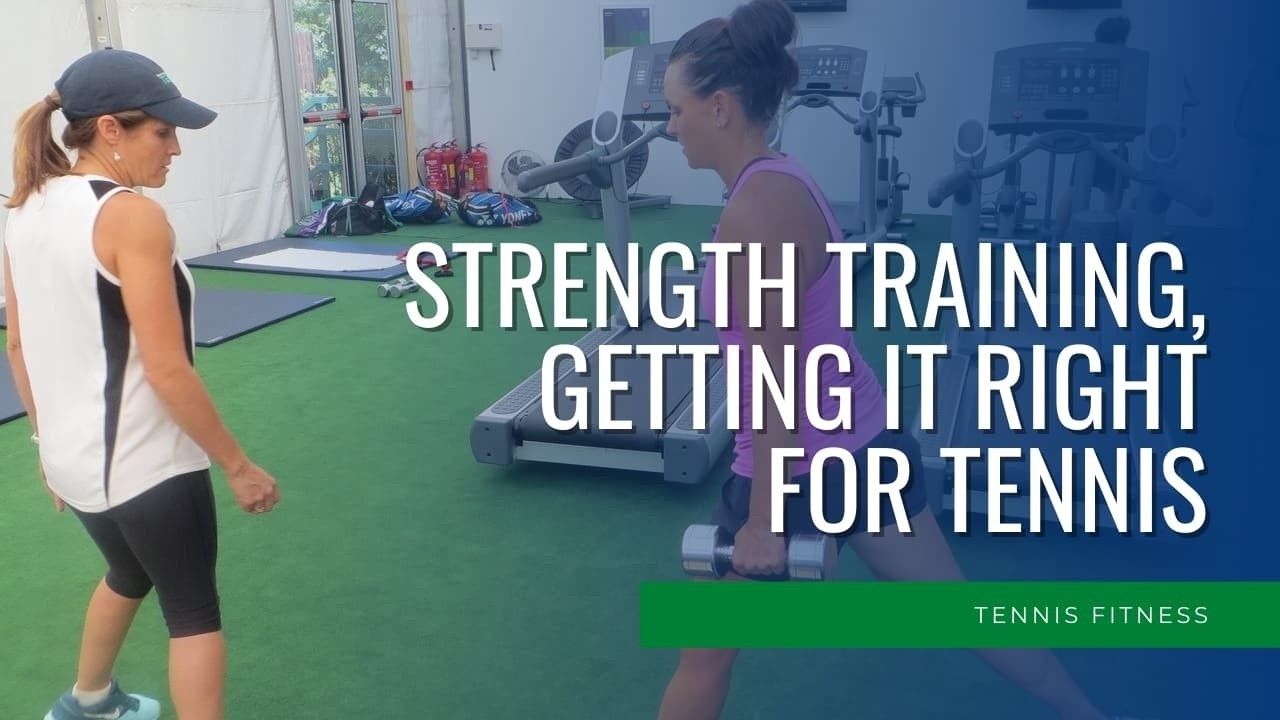Is Strength Training For Tennis Worth It?
Mar 29, 2022
Most, if not every tennis player will develop some form of tennis injury during their career. You will be surprised how many injuries can be prevented by strengthening the rights part of your body.
The most common injuries in tennis we see on a daily basis are, often overuse injuries.
Overuse injuries develop slowly and can start out as mild discomfort that gradually increases and becomes painful. Some common overuse injuries are:
1. Tennis Elbow – A very common cause of elbow pain due to the chronic irritation of the tendons on the outside of the elbow.
2. Wrist Tendonitis – Caused by irritation and inflammation around the wrist joint. Usually, this will occur for a number of reasons; Equipment (new racket, heavy/wet tennis balls, court surface), bad technique, or overuse (most common cause).
This can be prevented with some simple yet effective strengthening tennis exercises for the wrist, shoulders, and back. Try the below exercise to help prevent wrist injuries.
3. Shoulder Rotator cuff tears - If you’re a tennis player, I can guarantee you some time throughout your career you will have some form of shoulder pain. Usually, this pain is from one of the muscles around the shoulder called the rotator cuff (SITS - Supraspinatus, Infraspinatus, Tere Minor, Subscapularis).
These muscles are as big as your little finger, so it is important you don’t try to use a heavy load to strengthen them. Using a theraband or very light dumbbell is a great way to strengthen these SITS muscles. Every player on the tour does shoulder strengthening work, either prior to or within their tennis training sessions. Try the below exercise.
4. Achilles Tendonitis – Caused by inflammation where the achilles tendon attaches to the heel bone. This is one injury I am personally very familiar with. I have been self-treating my Achilles for a while. I have found the best way to treat achilles' issues is the combination of releasing the plantar fascia (underfoot) and calf muscle (check out the video), then strengthening the calf and soleus with some calf raises (Eccentric & Concentric). Try the below exercises.
5. Knee tendonitis – Caused by inflammation of the knee tendons. The knee joint is a hinge joint. Imagine a door hinge. If you take a few screws from one of the hinges, the door will no longer be aligned. The knee is similar. If you release tension and strengthen weak muscles above and below the knee joint you can prevent this from happening. Strengthen your quadriceps, lower abdominals, and gluteal muscles. That can help realign the knee joint. Every tennis player needs to implement some type of gluteal and lower abdominal work into their tennis fitness programs. Even the top players like Rafa and Roger still do these strengthening exercises. Try the below exercise.
Tennis Strength Training
The great news is most overuse injuries can be avoided, finding ways to prevent them is the key. The best thing we can suggest is to adopt a good tennis strengthening program into your off-court tennis training. You should also be implementing some of your strengthening exercises into your warm-up, prior to hitting the court. This is how we activate certain parts of the body that we want to be firing when we are on the court. Think of activation as waking up muscles and getting them excited to do something. The aim is not to fatigue the muscles in this process, simply to get them firing and ready to go.
Ok, I hope I have highlighted the need to focus on strengthening smaller muscle groups to prevent injuries, I even gave you some exercises to try. Now I want to discuss more general strength training and its benefits on performance.
Strength is the foundation for physical performance. What I mean by this is your strength foundation in large will affect your power output, movement capacity, and endurance.
How? Think of your strength foundation as the foundation of a house. If the foundation is strong and robust we can safely build what we need to on top of it. It will be stable enough to withstand the loads and demands placed on it. If the foundation is not deep enough, not prepared properly and unstable, you can guess what kind of drama you are going to get! No one wants their house falling down!
No matter your age or level of play, you should be doing at least 1 strength session a week. This is a must! I recommend players do their strength sessions away from their on-court tennis sessions, especially when they are just starting to follow a strength program. The reason is, you will be in a fatigued state after your strength session and you are opening the door for injury. It is best to have at least 6 hours between sessions, even better is doing your strength session on days when you are not going to be on the tennis court practicing.
A lot of players find it confusing knowing where to start and what to do. If you are one of them check out our range of online strength and conditioning programs here.
Off course, you need to have everything in balance in order to reach your physical best self. Strength training is not the answer to all our problems! But it is the highest priority in our opinion.
Working with a structured on-court and off-court tennis training plan is also critical in pulling everything together for you. Getting your tennis strength session in, combined with on-court tennis sessions, tennis agility training, and tennis recovery will minimize the risk of overuse injuries dramatically and boost performance by; allowing the body to rest and recover, building strength and stability throughout the body, releasing muscle tension, and increasing flexibility.
If you want to be a successful tennis player you need to have good management skills. We know it can be very busy fitting in everything in your programming. But if there is one thing you need to make sure you do, it is implementing a specific tennis strength training program into your off-court training.
If you need help and guidance structuring your training plan and to make sure you are getting it right, get in touch with us for help.
I hope that helps you understand the benefits of strength training for tennis and how to implement it into your training plan.
Now let's get you going!
I will be in touch shortly!

For more information on tennis strength programs click here - http://www.memberstennisfitness.com


